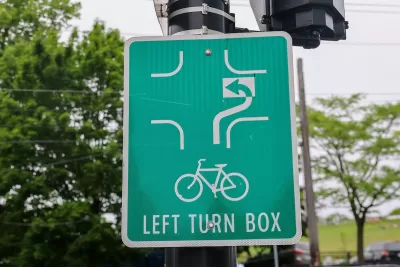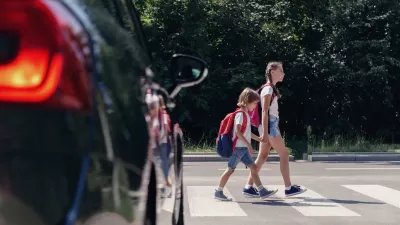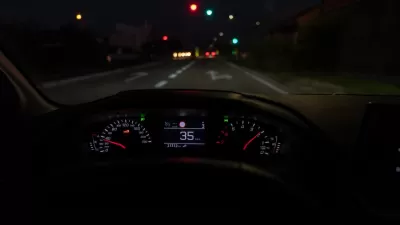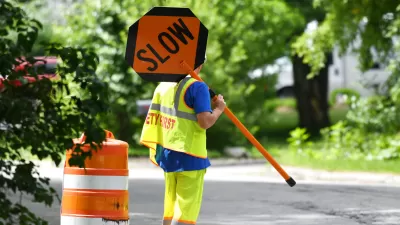The long-awaited changes include road design elements and signage aimed at improving safety for pedestrians and cyclists while planning for autonomous vehicles.

The Federal Highway Administration announced an important update to the Manual on Uniform Traffic Control Devices for Streets and Highways, known as the MUTCD. The update marks a victory for safe streets advocates who have long called for changes aimed at reducing risks to all road users.
According to an article by Dan Zukowski in Smart Cities Dive, “The new regulations include improvements for vulnerable road users — including pedestrians and bicyclists — such as rapid-flashing beacons that pedestrians can activate at marked crosswalks and green-colored pavement for bicycle lanes.” Other measures include bike turn boxes at intersections and specialized traffic signals for bikes, as well as elements that prepare for autonomous vehicles
The FHWA acknowledged a need to update the manual more frequently than in the past as technology and transportation change more rapidly. “The new standards also include signage for electric vehicle charging stations and ways to prepare roadways for autonomous vehicles.”
FULL STORY: Rules of the Road Get a Long-Awaited Update in the US

Trump Administration Could Effectively End Housing Voucher Program
Federal officials are eyeing major cuts to the Section 8 program that helps millions of low-income households pay rent.

Planetizen Federal Action Tracker
A weekly monitor of how Trump’s orders and actions are impacting planners and planning in America.

Ken Jennings Launches Transit Web Series
The Jeopardy champ wants you to ride public transit.

California Invests Additional $5M in Electric School Buses
The state wants to electrify all of its school bus fleets by 2035.

Austin Launches $2M Homelessness Prevention Fund
A new grant program from the city’s Homeless Strategy Office will fund rental assistance and supportive services.

Alabama School Forestry Initiative Brings Trees to Schoolyards
Trees can improve physical and mental health for students and commnity members.
Urban Design for Planners 1: Software Tools
This six-course series explores essential urban design concepts using open source software and equips planners with the tools they need to participate fully in the urban design process.
Planning for Universal Design
Learn the tools for implementing Universal Design in planning regulations.
Ada County Highway District
Clanton & Associates, Inc.
Jessamine County Fiscal Court
Institute for Housing and Urban Development Studies (IHS)
City of Grandview
Harvard GSD Executive Education
Toledo-Lucas County Plan Commissions
Salt Lake City
NYU Wagner Graduate School of Public Service





























